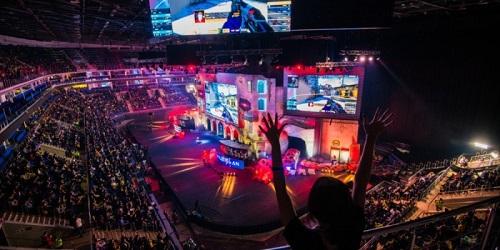Analyzing the Powerful Double-Digit Drivers Behind the Global Esports Market CAGR

The projected Esports CAGR (Compound Annual Growth Rate) is a powerful testament to the sector's explosive and sustained expansion, far outpacing the growth of many traditional media and entertainment industries. A growth rate of this magnitude indicates a market that is not only attracting a massive new audience but is also rapidly maturing in its economic and structural foundations. This is not a speculative bubble but a reflection of fundamental shifts in how a new generation consumes entertainment and interacts with brands. The industry's bright outlook is quantified by compelling financial analysis, which anticipates a remarkable CAGR of 13.93% during the forecast period of 2025 to 2035, signaling strong and continuous investor confidence in the future of competitive gaming as a premier global spectacle.
The primary driver behind this robust growth is the sheer size and unwavering engagement of its global audience. The esports fanbase is predominantly composed of millennials and Gen Z, a demographic of digital natives who have grown up with video games as a core part of their social and recreational lives. For this audience, watching high-level competitive gaming is a natural and compelling form of entertainment. Streaming platforms have made this content more accessible than ever, allowing viewers to watch live events for free from anywhere in the world. As this generation's purchasing power increases and as more young people enter the key demographic, the audience size is set to continue its steep upward trajectory, providing a solid foundation for the market's continued economic growth and attracting advertisers eager to reach this valuable consumer segment.
Another powerful catalyst is the increasing investment from non-endemic brands, which serves as a major validation of esports' mainstream appeal. In the early days, sponsorships were largely limited to companies directly related to gaming, such as computer hardware and energy drink brands. Today, the landscape has completely transformed, with major global brands from virtually every sector—including automotive, luxury fashion, financial services, and fast-food—investing millions of dollars in esports sponsorships. These brands recognize that esports provides a unique and authentic channel to connect with a young, tech-savvy, and often hard-to-reach audience. This influx of corporate capital is fueling higher prize pools, larger league budgets, and greater professionalization across the entire industry, creating a virtuous cycle of growth and legitimacy that continues to attract even more investment.
Finally, ongoing technological advancements and the rise of new platforms are continuously expanding the market's horizons. The proliferation of high-speed internet and powerful mobile devices has made esports more accessible than ever before, leading to the explosive growth of mobile esports, particularly in emerging markets across Southeast Asia and Latin America. This dramatically lowers the barrier to entry for both aspiring players and new viewers. Furthermore, innovations in broadcasting, including augmented reality overlays, interactive viewer experiences, and advanced in-game analytics, are making esports a more engaging and immersive spectacle. These technological tailwinds ensure that the industry will not only continue to grow its existing audience but will also constantly find new ways to innovate and expand its reach.
Explore Our Latest Trending Reports:
China Quantum Computing Market
- Music
- Travel
- Technology
- AI
- Business
- Wellness
- Theater
- Sports
- Shopping
- Religion
- Party
- Other
- Networking
- Art
- Literature
- Home
- Health
- Gardening
- Juegos
- Food
- Fitness
- Film
- Drinks
- Dance
- Crafts
- Causes
